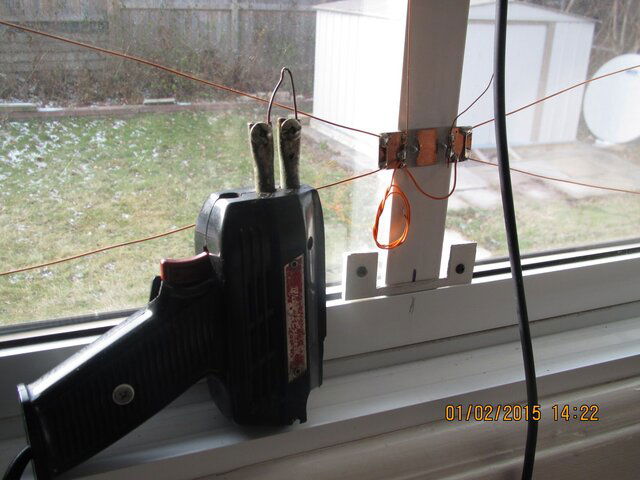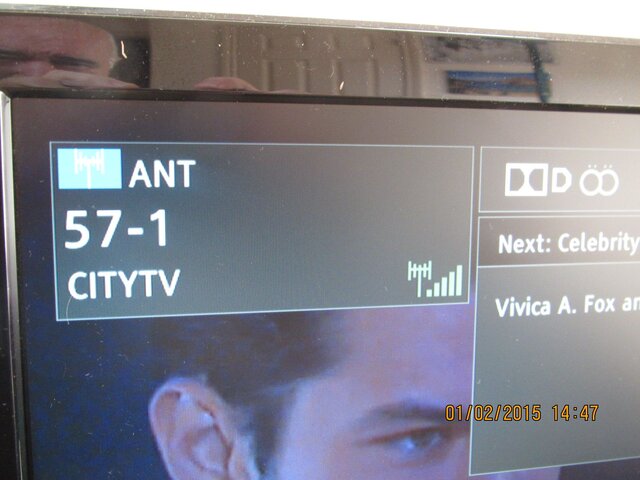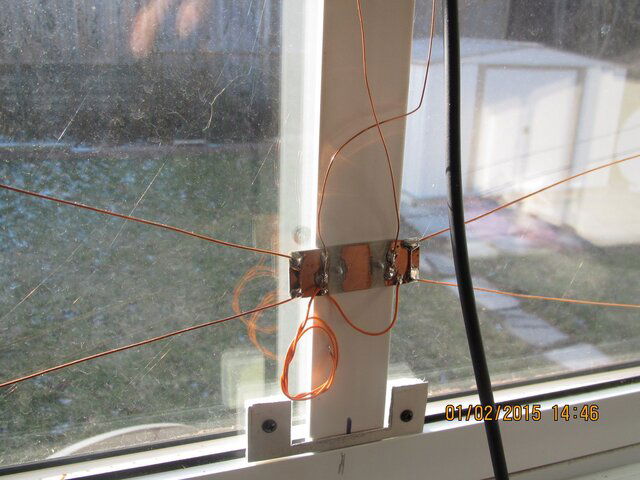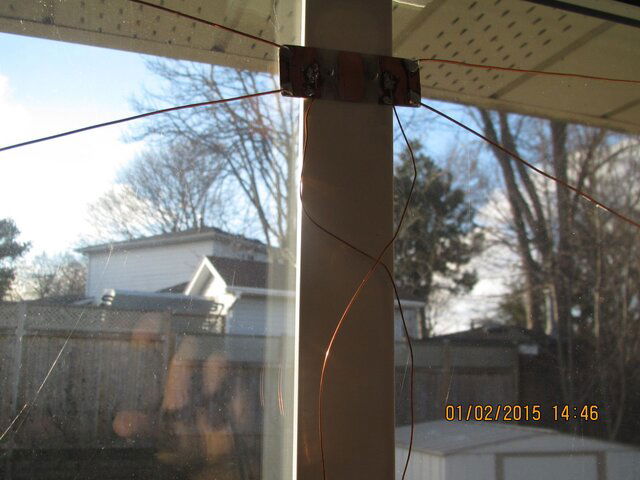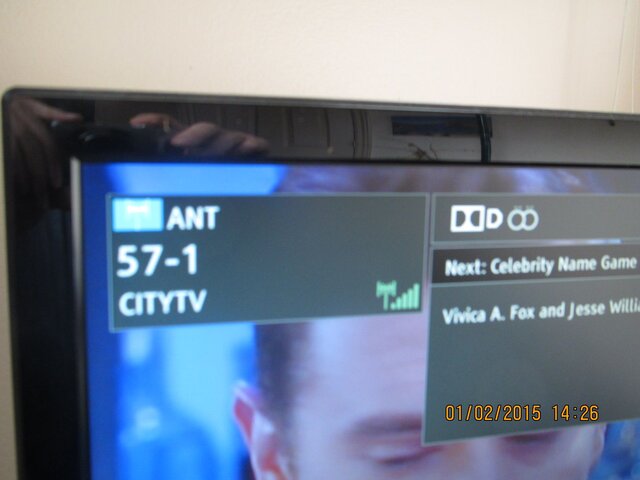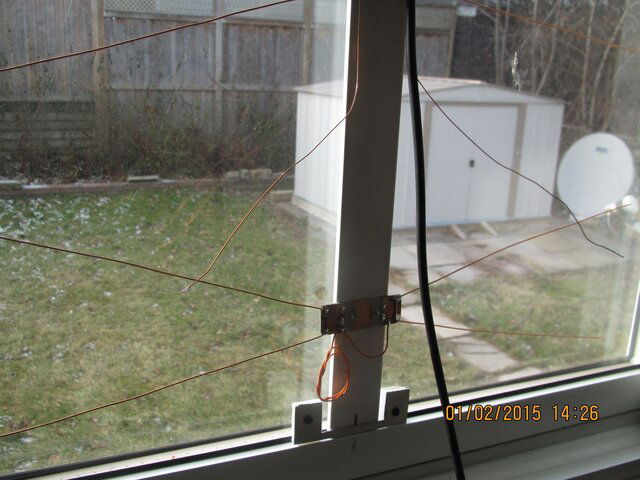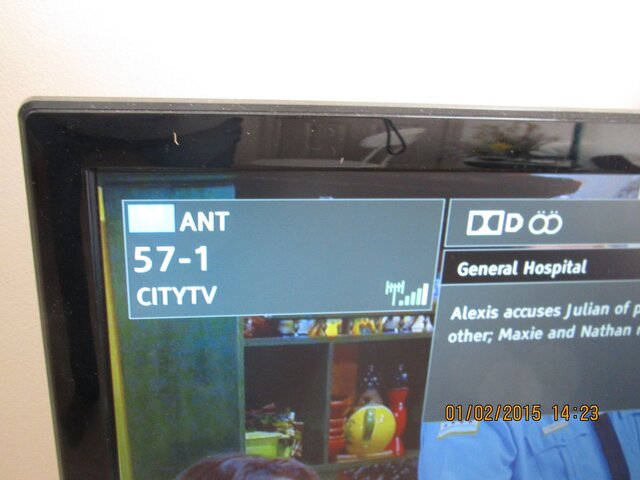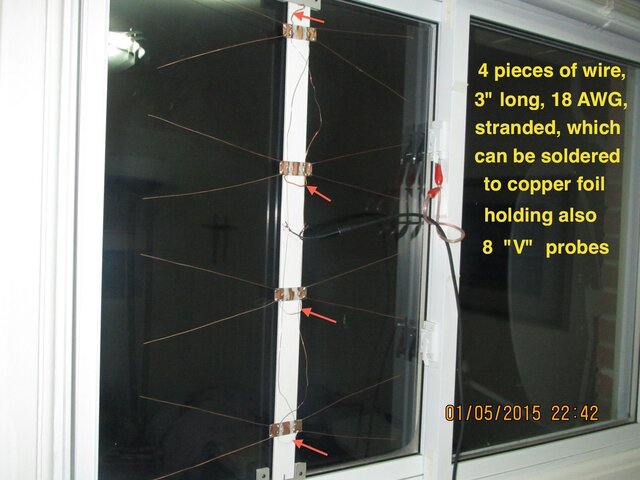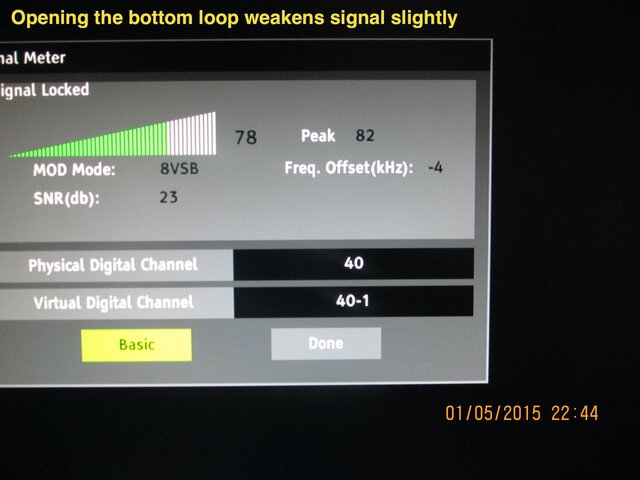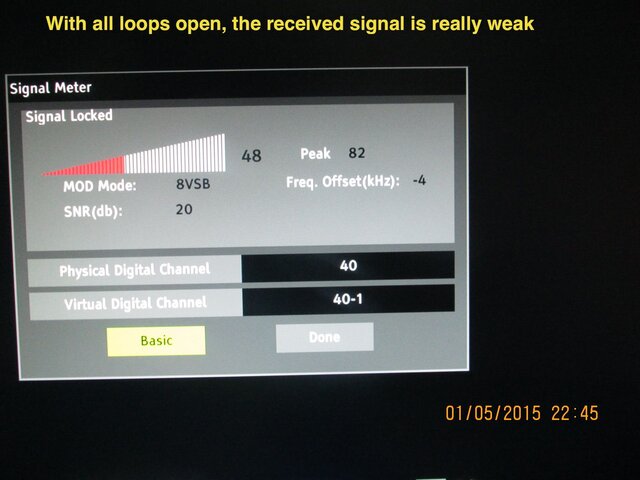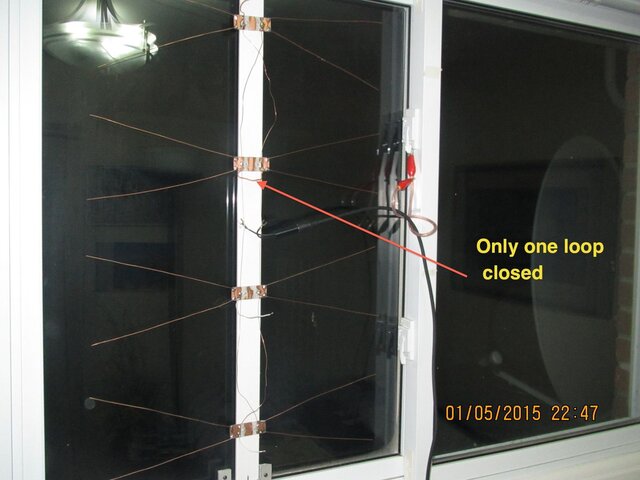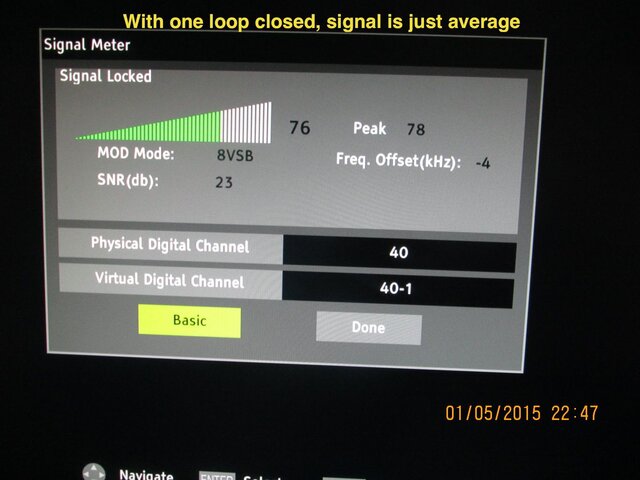As there are many descriptions of antennas made of coat hangers, one similar version has been tried, based on
dimensions taken from factory- made antenna.
I made 3 models of such antenna : one is utilized in our friends' apartment window (7-th floor, facing West - towards downtown Toronto). Such antenna pulled in 31 channels TV, most of Buffalo.
My 2 models of this antenna also scanned in 20-something channels, but we can reliably receive only about
6-8 channels.
What is puzzling me, reversing vertical bars of antenna does not make any difference in reception.
Annotated pictures follow :
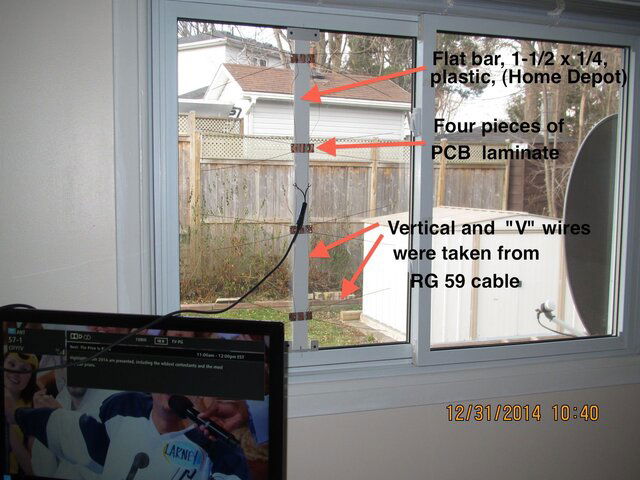
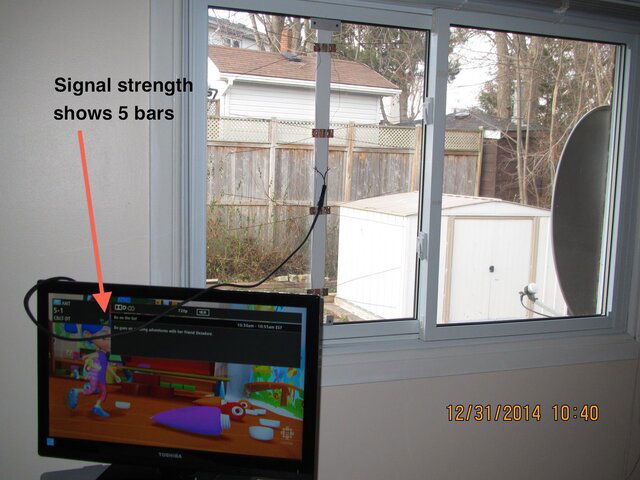


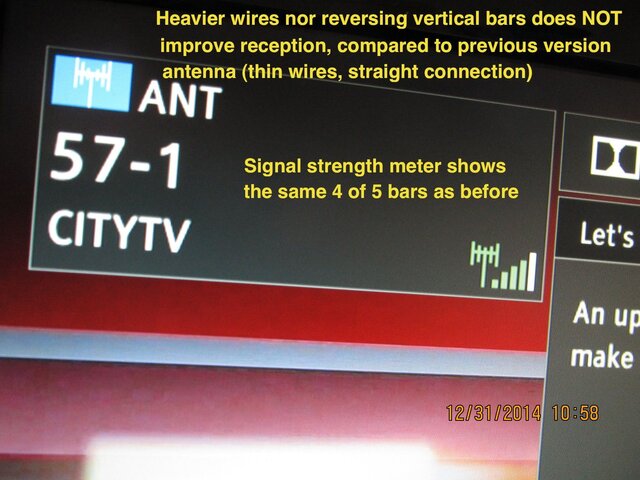

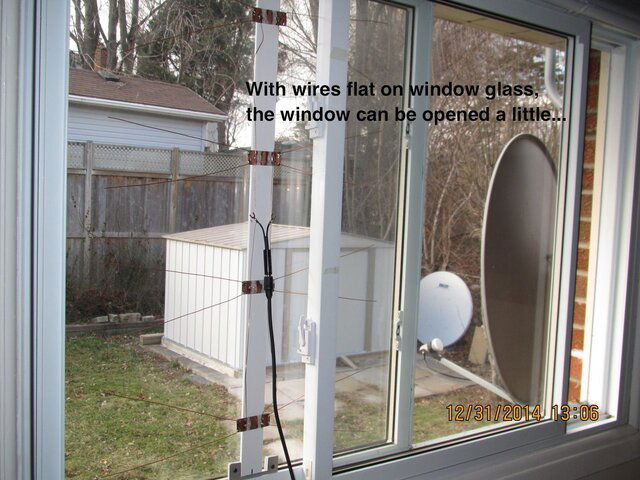
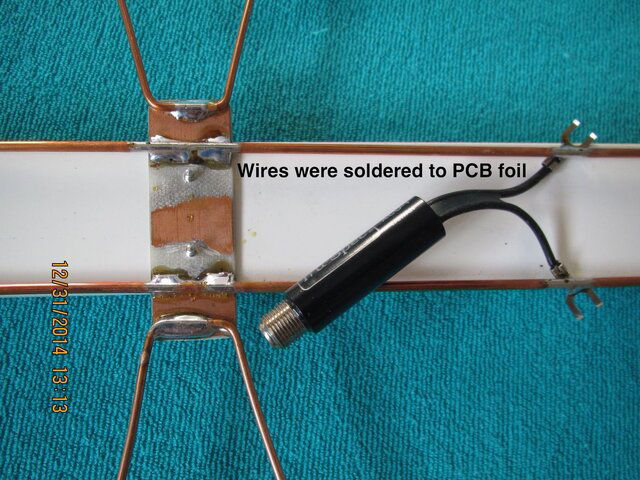

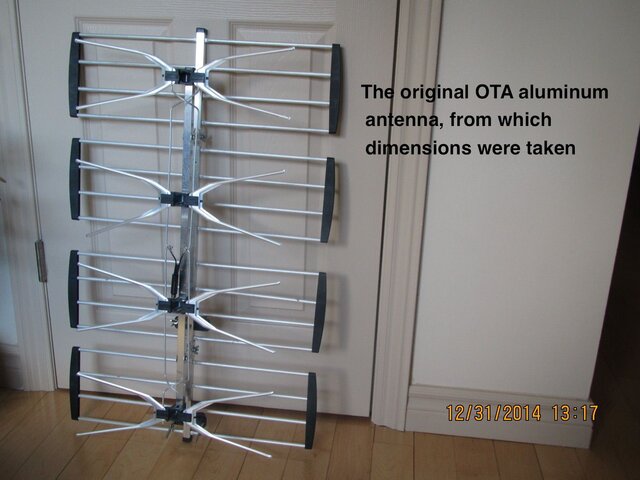
dimensions taken from factory- made antenna.
I made 3 models of such antenna : one is utilized in our friends' apartment window (7-th floor, facing West - towards downtown Toronto). Such antenna pulled in 31 channels TV, most of Buffalo.
My 2 models of this antenna also scanned in 20-something channels, but we can reliably receive only about
6-8 channels.
What is puzzling me, reversing vertical bars of antenna does not make any difference in reception.
Annotated pictures follow :












